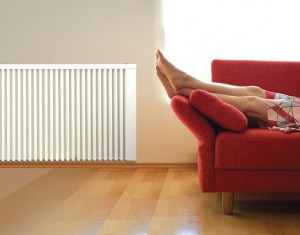Temperatures have begun to decline, signaling that the start of winter is a lot closer than it seems. Soon enough, you’ll be turning on your heater to keep your home comfortable, if you haven’t already. Hopefully if you have, you didn’t have any problems.
But what happens if you go to turn your furnace on and it doesn’t start up? What could be the cause of this trouble? Read on to learn why furnaces may fail to turn on. And if your unit is aging or repeatedly giving you trouble, it might be time to explore which home heating system is right for you and whether a newer, more efficient model could be a better long-term investment.
Furnace replacement involves removing your existing furnace or old unit and installing a new furnace that is properly sized for your home’s square footage and heating capacity needs. This process includes disconnecting vents, electrical wiring, gas lines, air ducts, and ductwork to safely remove the old furnace. Handling heavy objects, such as the furnace unit and other large components, requires proper safety measures and often two technicians. The use of power tools is essential during installation for both efficiency and safety. Preparing the installation area by checking for obstructions and ensuring readiness is a key step before starting the project. After removal, the furnace installer will inspect and reconnect air ducts to ensure optimal airflow and system performance. Choosing a high-efficiency furnace model can help lower your heating bills and provide long term savings. Upgrading to a new system can also improve your furnace’s efficiency, resulting in additional cost savings over time. When replacing your furnace, it’s important to consult a professional furnace installer, who has special training required for the job and is responsible for inspecting ductwork, ensuring proper sizing, and performing the installation steps. The cost of furnace replacement can vary depending on the type of system, such as a gas furnace, installation complexity, and efficiency features, so be sure to consider other factors such as your home’s requirements and overall value when deciding to replace your furnace. Furnace installation is a comprehensive project that requires careful planning and coordination to ensure a well-done job and long-term satisfaction.
What should you check if your furnace won’t start, and when should you consider furnace installation?
If your furnace won’t start, check that the thermostat is set to heat, the circuit breaker hasn’t tripped, and the furnace switch is on. Also inspect the air filter for clogs. If problems persist, it may indicate an aging system or repeated failures, signs that furnace installation could be the best solution.
Introduction to Furnace Installation
Furnace installation is a critical step in ensuring your home’s heating system operates safely and efficiently. The furnace installation process involves much more than simply placing a new unit in your home, it requires specialized training, technical knowledge, and the right tools to guarantee proper installation. An experienced HVAC technician understands the complexities of connecting ductwork, electrical wiring, and fuel lines, as well as calibrating the system for optimal performance. Because the installation process is complicated and involves many technical details, attempting it without the right expertise can lead to costly mistakes and safety hazards. If you’re unsure which ignition system your home needs, learn about pilot lights vs. electric ignition to make an informed decision. By recognizing the importance of professional installation, homeowners can make informed decisions that protect their investment and ensure reliable heating for years to come.
Types of Furnaces
When selecting a new furnace, it’s important to understand the different types available and how they fit your home’s needs. Gas furnaces are among the most popular choices for residential HVAC systems, known for their strong heating capacity and ability to deliver heated air efficiently throughout your home. They typically offer high energy efficiency and lower operating costs, especially in areas with access to natural gas. Electric furnaces, while often less expensive in terms of initial cost, may result in higher heating bills due to electricity rates, but they can be a good option for homes without gas supply. If you’re considering one, read our electric furnace guide to better understand how they operate and what issues to watch for. Oil furnaces are another alternative, though they are less common and may require more maintenance. The right furnace for your home will depend on factors such as your desired energy efficiency, the size of your space, and your budget for both upfront and ongoing costs. Consulting with an HVAC professional can help you choose a system that matches your heating requirements and maximizes efficiency.
Continue Reading
Tags: Cedar Falls, furnace repairs, heating repairs
Posted in Cedar Falls Blog, Heating | Comments Off on Help! My Furnace Won’t Start Up



